Starbase versus Earth: Biking South Texas, Part Two
Writing by Michael Chase, Drawings by Jenny Hershey
We met Jeffrey as we ate lunch at Starbase, where SpaceX's company town echos the secretive atmosphere of the Manhattan Project. A veteran welder with twelve years of pipe work behind him, he now welds “rocket barrels” - a role he's held for two years. The work begins with transforming massive metal sheets into cylinders that welders assemble manually. Afterwards, robots complete each joint with laser precision. Behind Jeffrey, vertical hangars pierce the Texas sky, each one housing rockets in various stages of assembly. Like all SpaceX facilities, Starbase operates without unions - a deliberate choice by the company despite the skilled nature of the work. The demands are considerable: long hours with salaries that range from $27,000 to $50,000 (regarded as a good salary in Brownsville), based on expertise. Jeffrey makes the daily twenty-five mile journey from Brownsville along the congested Boca Chica Blvd, powered by energy drinks and the pride of building rockets, even as he works without the protections that union representation might provide.
“Orbiting Earth in the spaceship, I saw how beautiful our planet is. People, let us preserve and increase this beauty, not destroy it!”
Astronaut Yuri Gagarin
Moving On
From Rio Grande City, Texas, (where we published Part One of our current journey) we pedaled toward Brownsville, where we spent four days exploring the lower Rio Grande Valley. Then came a difficult decision: the routes north posed significant safety concerns along the Gulf coast, forcing us to reluctantly load our bicycles into a rented truck for the journey back to San Antonio. The alternatives – retracing our path through Laredo or Hebronville – would have demanded more time than we could spare. While the truck resolved our immediate safety concerns, it weighed heavily against our commitment to low-carbon travel. In an era where so many of our elected leaders treat environmental stewardship with contempt, such compromises taste especially bitter, though we remind ourselves - as we must - that every effort to protect our planet matters, no matter how small.
Texas National Guard soldiers on patrol near the Sabal Palm Wildlife Sanctuary. Locals told us the National Guard sends soldiers to various points near the border from time to time. With only one exception (a border patrol agent) all the locals we asked told us the border at Brownsville is quiet, and there is no border emergency. Old folks reminisce about the days when anyone could walk across the border at will, and when Brownsville and Matamoros functioned as one city.
Everything feels heavier now, as our country and our world face unprecedented challenges. The familiar rhythms of democratic life have given way to a jarring new reality, as though someone rewrote the rules of a game we learned as children. Our nation trembles under the force of a leader whose impulsive actions and dismissive cruelty have carved deep fissures in ground we once thought unshakeable. Those who follow him seem to peer through a darkened glass that shows them a different country altogether – one where fellow citizens become enemies simply for seeing America through another lens. "Free speech" has devolved into "loyal speech," and "freedom of choice" now means "the choice of those in control." Yet even in this oppressive shadow, many of us will never forget the light of what America can be, and are strengthening our resolve to protect it.
The skin of an alligator adorns a fence north of Rio Grande City west of McAllen.
The Rio Grande Valley
As we biked toward Brownsville through the valley country north of the urban sprawl that stretches from McAllen toward the Gulf Coast, the back roads revealed quiet wonders. We passed weathered ranches and mysterious compounds, fallow fields awaiting seed, and dry arroyos punctuated by ditches holding pools of brown irrigation water – meager offerings from the weary trickle of the Rio Grande. Against a backdrop of modern detritus – discarded tires, windblown plastic, cardboard and fast-food remnants – great blue herons and American egrets would suddenly take flight, their grace a stark contrast to the scattered debris. In every direction lay a landscape where cultures, ecosystems, and the relentless march of progress collide, each vying for dominance in this borderland tapestry.
A rough map of the southernmost tip of Texas in the lower Rio Grande Valley. It is noteworthy that in addition to Space X, the region will soon be home to two liquified natural gas (LNG) export plants currently under construction in the massive Brownsville Port.
Brownsville, anchored at Texas's southernmost reach, pulses with the intertwined rhythms of Mexico and the United States. Here, coastal wetlands merge into arid brushlands, each habitat harboring its own rich congregation of wildlife. But this delicate balance faces what Jenny and I now call "Floridazation" – an aggressive tide of urbanization manifesting in endless malls, congested roads, and infrastructure that seems deliberately hostile to walking or cycling. It's a familiar pattern repeated across the globe, where rapid (and mindless) urbanization drowns out the fundamental needs of community, and the simple act of human-powered movement becomes an act of resistance.
Ad Astra
Our first day's exploration after arriving in Brownsville took us east on Boca Chica Boulevard toward the Gulf Coast, where Elon Musk’s space-age ambitions have reshaped an ancient shoreline. The road to the coast passes Starbase, SpaceX's sprawling launch and research facility, where massive steel structures rise incongruously from the coastal scrubland. The facility stands as both beacon and warning, depending on one’s perspective: a testament to human ingenuity and a reminder of how quickly we can transform landscapes that have existed unchanged for millennia.
A mural of a human settlement on Mars on the side of a large building at Starbase.
SpaceX has invested over $3 billion in infrastructure and spent $90 million with local suppliers since January 2023, creating 3,400 direct jobs and an estimated 21,400 indirect positions. Yet this economic boom carries a hefty price tag for many locals, as highly paid workers drive up housing costs and property taxes in a region long known for its affordability.
As we biked through Starbase, where rocket facilities and cookie-cutter homes now stand on what was recently federal wildlife refuge land, workers methodically planted rows of palm trees along the street. In the next block, a young man playing with a puppy caught our attention, and he politely asked us to stop taking photos. He confirmed that he lived at Starbase, seeming content when we asked about his experience. But when we inquired about his work, the conversation shifted. With practiced calm, he simply stated, "I can't tell you." Even when asked if he was an engineer or scientist, his response remained unchanged. His explanation was quietly profound: "It's like Oppenheimer." Jenny wondered about daily life, asking if he went to Brownsville for groceries. "Everything is delivered," he explained, removing any need to leave the compound. As we pedaled away, his words transformed our understanding of Starbase: a modern-day Los Alamos rising from the Texas coast, wrapped in its own carefully guarded secrets.
Biking the 23 miles from Brownsville to Starbase is no longer the favorite ride of local cyclists. In fact, a mechanic at the local bike shop, Bicycle World, told us he had not ridden on Boca Chica Boulevard since Space X moved in because locals now think it is too dangerous. We didn't find it perilous as much as periodically unpleasant; there is a shoulder that allows one some shelter from the countless construction vehicles that dominate a road also jammed with tourists. Yet, as we approached SpaceX's launch facility on our bicycles, we could feel the pulse of activity, the sense of something big happening.
The approach to Starbase from the west. The marshland in the foreground was part of the vast Boca Chica wildlife refuge less than a decade ago.
Even in Brownsville, buildings tremble during rocket launches, a tangible reminder of the immense power being unleashed. One local resident told us she thought the launches were damaging the foundations of her home. Anyway you look at it, the environmental cost of this progress is stark. Before SpaceX's arrival, the Boca Chica Wildlife Refuge was a vast, pristine ecosystem of tidal flats, salt prairies, and black mangroves. Vegetated dunes provided crucial habitat for endangered species like the Kemp's ridley sea turtle and the ocelot, while countless shorebirds made their homes in the wetlands. The beach itself served as a beloved destination for fishing, swimming, and birdwatching, drawing both locals and researchers to its unspoiled shores.
Our bicycles rest in the sand where Boca Chica Boulevard meets the Gulf, framed against SpaceX's massive new launch pads rising about a mile east of Starbase. This is the same site where, a few years ago, a concrete launching pad exploded during testing, scattering chunks of debris widely across the adjacent wildlife refuge. Some of these concrete fragments still lie visible from the road.
Today, environmental advocates and regulatory agencies paint a troubling picture of this transformed landscape. Reports of pollutant releases near water bodies have drawn scrutiny from the Texas Commission on Environmental Quality and EPA. The disruption to wildlife habitats has raised particular concern about endangered species, whose precarious existence becomes more tenuous with each launch and expansion. And last but not least, road and beach closures necessary for rocket launches have also become a point of contention, impacting local access to areas that are culturally significant.
At Starbase, we paused to admire a striking mural adorning the wall of the employee-only restaurant. When we asked if we could eat our packed lunch in the patio, a staff member politely turned us away – another small reminder that we were outsiders at the edge of a restricted world.
These environmental challenges potentially threaten SpaceX's ambitious plans for increased Starship launches. Yet, SpaceX's presence on the Texas coast represents more than just a local development versus environmental story. The company has become deeply entwined with national security interests through substantial federal contracts. A $733.6 million agreement for National Security Space Launch services and a $70 million Starshield satellite network contract highlight the government's growing reliance on private space capabilities. A classified $1.8 billion contract further underscores SpaceX's critical role in America's space infrastructure.
This painting sits next to a bust of Elon Musk, both of which are part of a quirky celebration created by a mysterious French entrepreneur named Louis, and ElonRWA - a Real World Asset token he co-created, adding to Musk fandom in Texas.
These multi-million dollar contracts for launch services, satellite networks, and even classified projects underscore the close relationship between the company and the government. This entanglement of private enterprise and national security adds another layer of complexity to the debate, making it even more difficult to balance the needs of progress with the imperative to protect our planet.
As we biked from Starbase back toward Brownsville, we felt both unease and wonder. The allure of space exploration is undeniable, a testament to human ingenuity and our insatiable curiosity. But the cost to our planet, our only home, cannot be ignored. We must find a way to reconcile our dreams of reaching for the stars with the urgent need to preserve the earth beneath our feet. The exploration of space should not come at the expense of the very planet that makes our existence possible. We need a new paradigm, one that values both innovation and environmental stewardship, a future where progress and preservation go hand in hand. The journey to the stars should not leave a trail of destruction in its wake.
Here and Now
We met Celina as she was leaving Brownsville's Immaculate Conception Cathedral, a 168-year-old sanctuary where she accompanies her elderly parents to daily service. Her story embodies the rich tapestry of South Texas – generations of Mexican American heritage interwoven with her marriage to David, whose European American roots run equally deep in Texas soil. Together they've raised three remarkable sons: their eldest manages the cryptocurrency division at the local Department of Justice, their middle son is an artist, and their youngest excels at the local college. Over dinner with their entire family, we were moved by their warmth, their thoughtful insights, and their profound love for South Texas. Celina, raised in a long tradition of Democratic values, speaks with quiet strength about her dismay over the current political climate. Yet her message remains one of resilience and hope. "We need to maintain community and keep the faith," she reminded us throughout the evening, her words carrying the weight of generations who have successfully preserved their humanity through other equally challenging times.
The people of South Texas have long demonstrated how cultures can interweave peacefully, how faith and family can anchor communities through changing times, and how resilience can flourish in the space between two nations. Yet now South Texans face an acceleration of history that their adaptability may struggle to absorb. As we drive home to New York City with our bicycles on our bike rack, we are struck by the irony of leaving a region that has mastered the art of patient coexistence being suddenly thrust into a future defined by urgency – urgent development, urgent immigrantion security, urgent dreams of Mars.
The Sanctuary at Brownsville's Immaculate Conception Cathedral.
The great blue herons still rise from the marshes, families still gather for Sunday dinners that span generations and borders, but beneath it all runs a current of unease. Perhaps the deepest wisdom of South Texas lies in its traditional understanding of time – measured not in quarterly profits or rocket launches, but in seasons, generations, and cultures learning to share common ground. In our rush to reach the stars, we might do well to pause and learn from those who have long known how to navigate the delicate balance between progress and preservation, between ambition and acceptance, between the urgency of now and the wisdom of waiting.
We met Michael, a nineteen-year-old student, taking a break on the sunlit campus of Texas Southmost College in Brownsville. Living with his grandmother who adopted him, Michael carries both the warmth of her care and the fire of his own ambitions. His dream of becoming a martial arts professional and building a social media following burns bright, though the path isn't easy – training with a Sensei remains out of reach at $235 per month. Yet there's a thoughtful side to this young warrior; as he headed off to Psychology 101, we smiled at how this coursework might serve him well, both in and out of the ring. In Michael's story, we glimpsed the familiar dance of youthful ambition - balancing big dreams against practical realities.
Stay vigilant! Thanks for reading. If you haven’t done so, please subscribe to this blog to follow our next biking trip.
This newsletter was written by Michael Chase, and illustrated by Jenny Hershey. Unless otherwise noted, all material is the copyrighted property of the authors, including all photographs and drawings.
Jennifer Hershey’s drawings can be enjoyed on Instagram @deeofo.



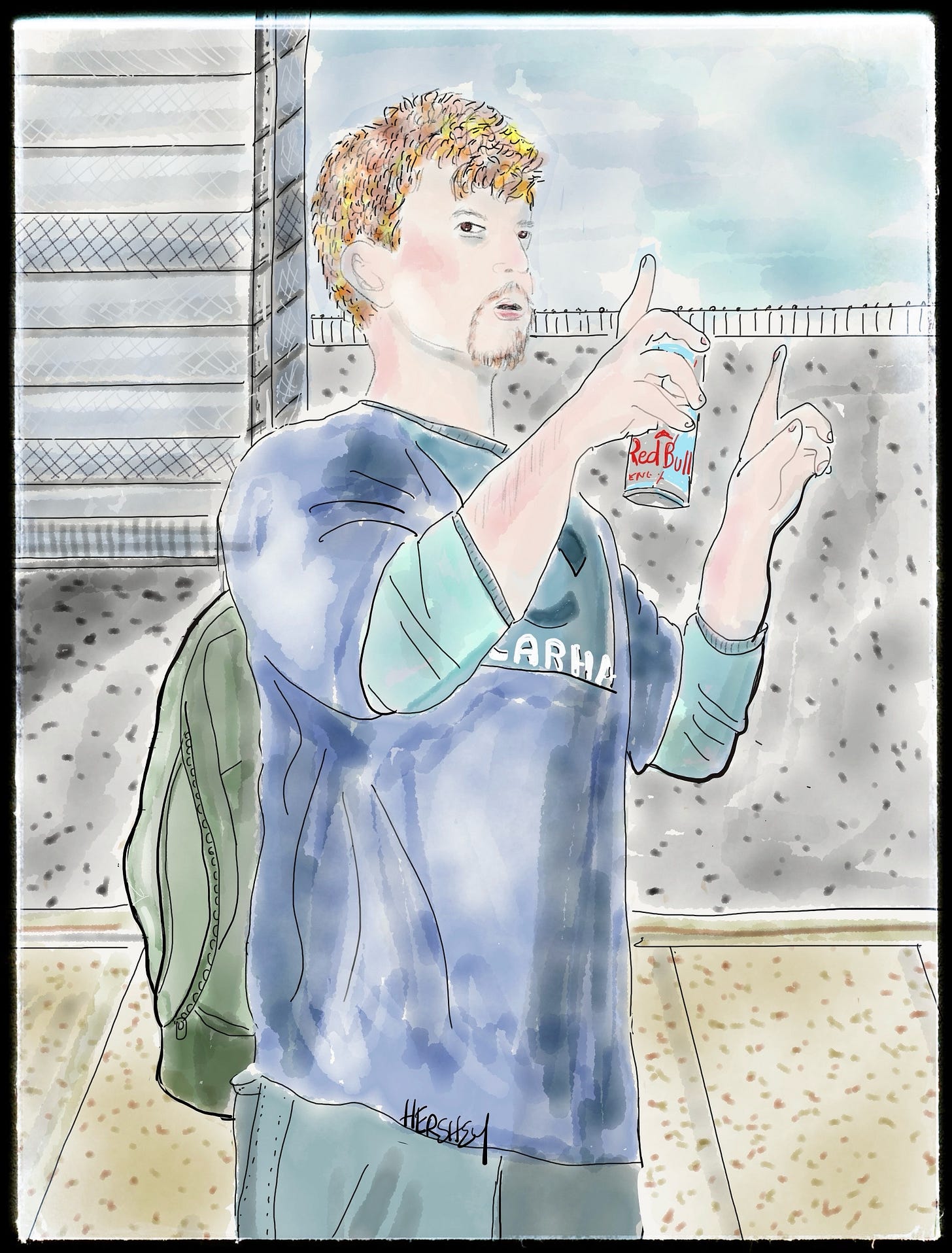
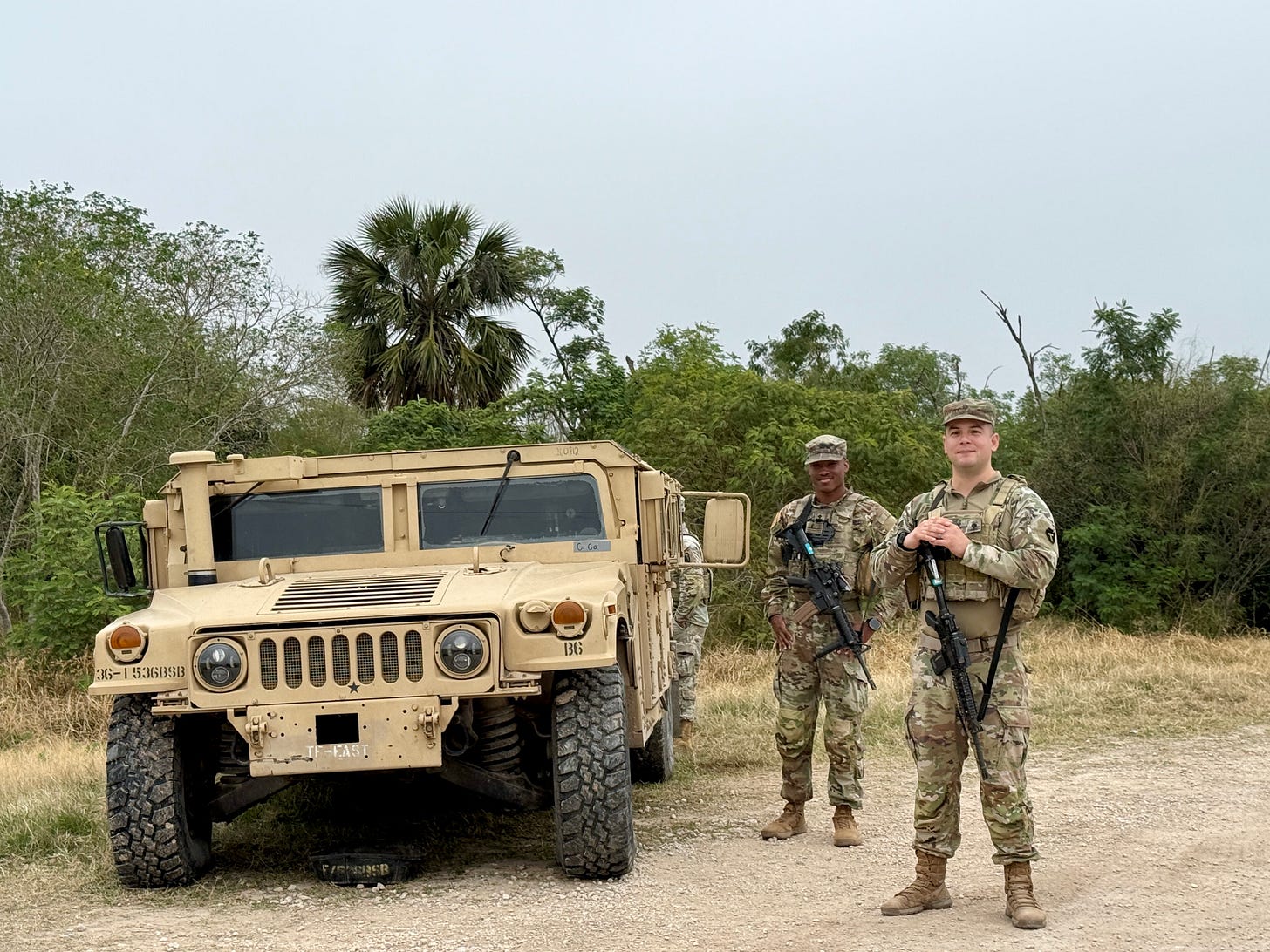
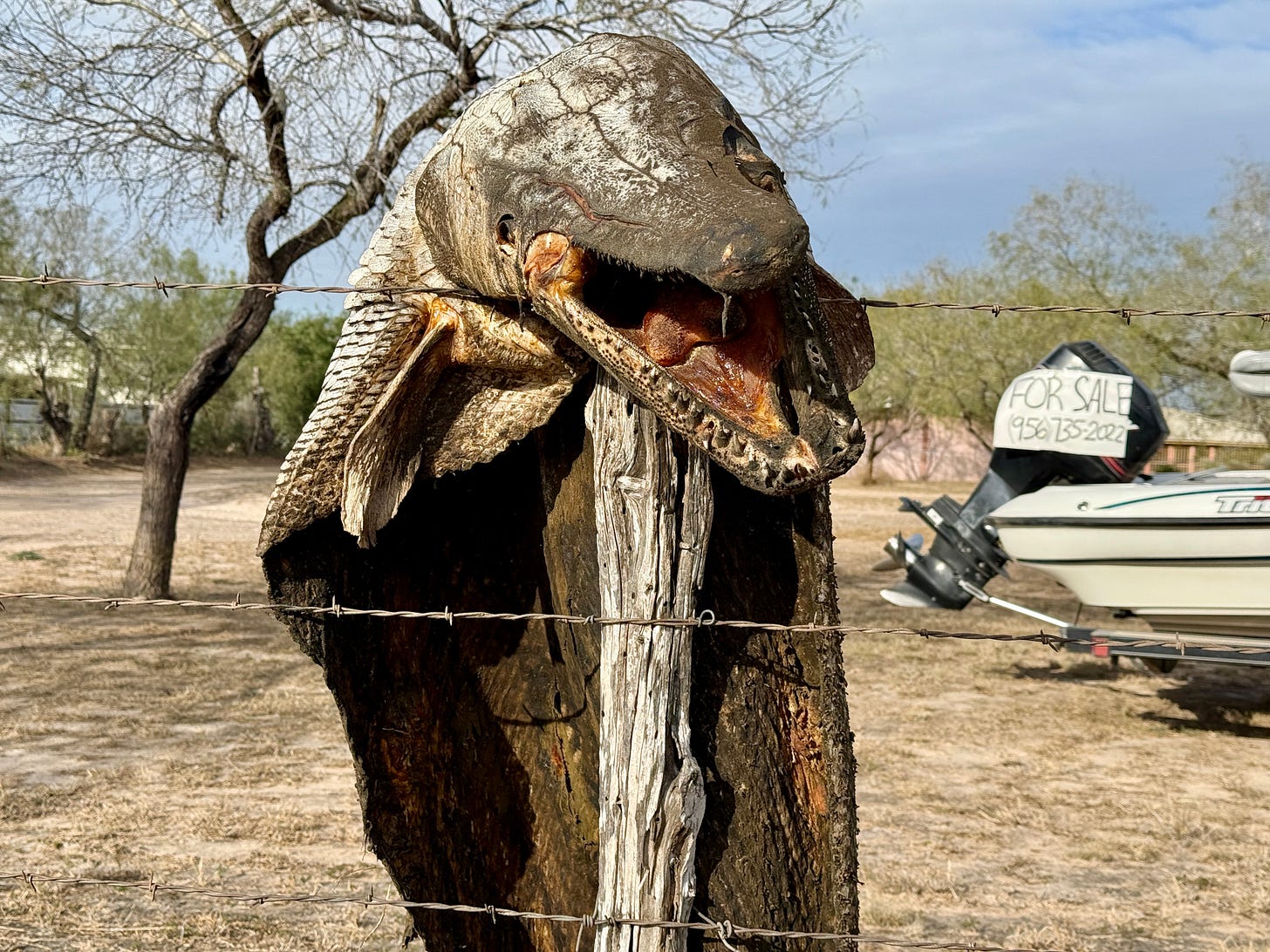
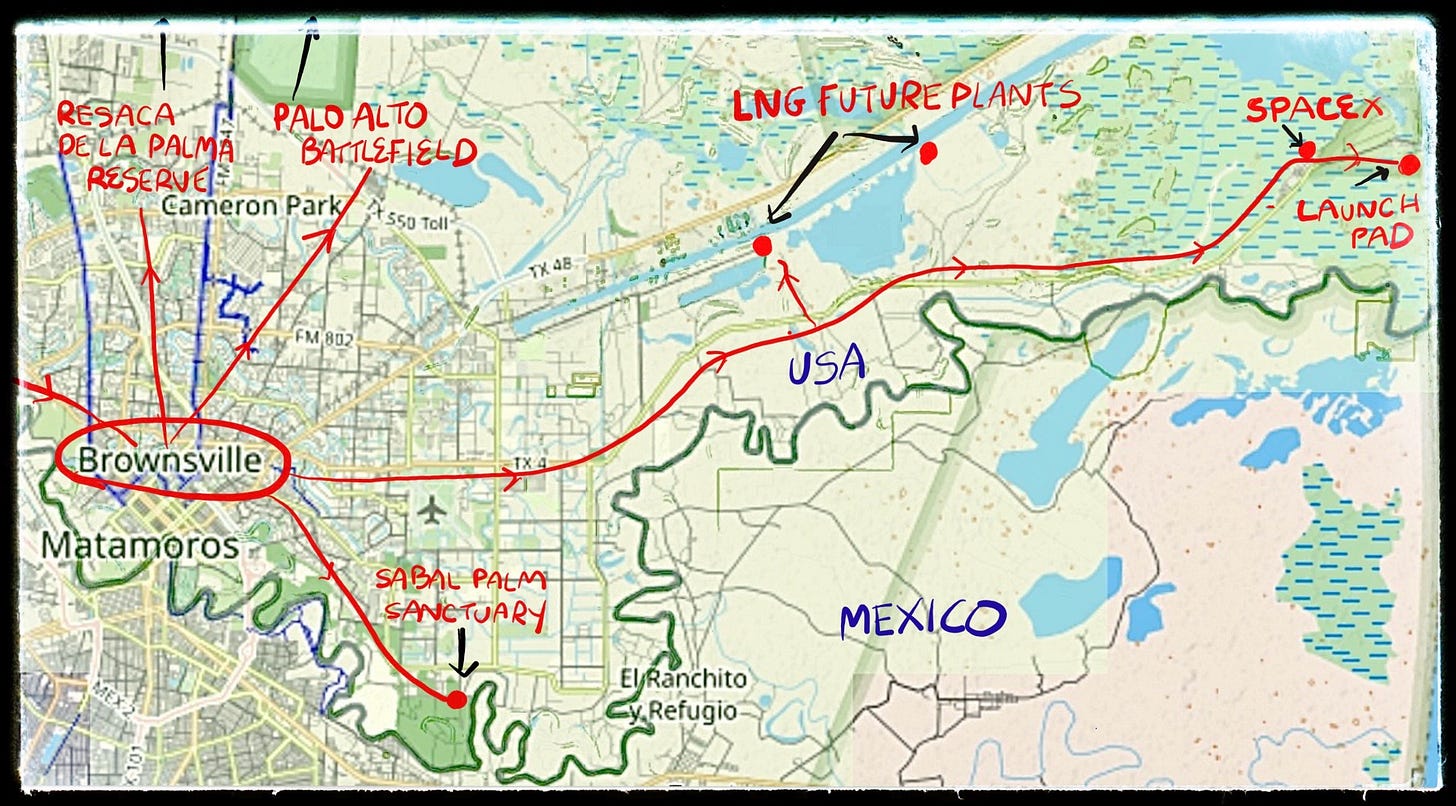
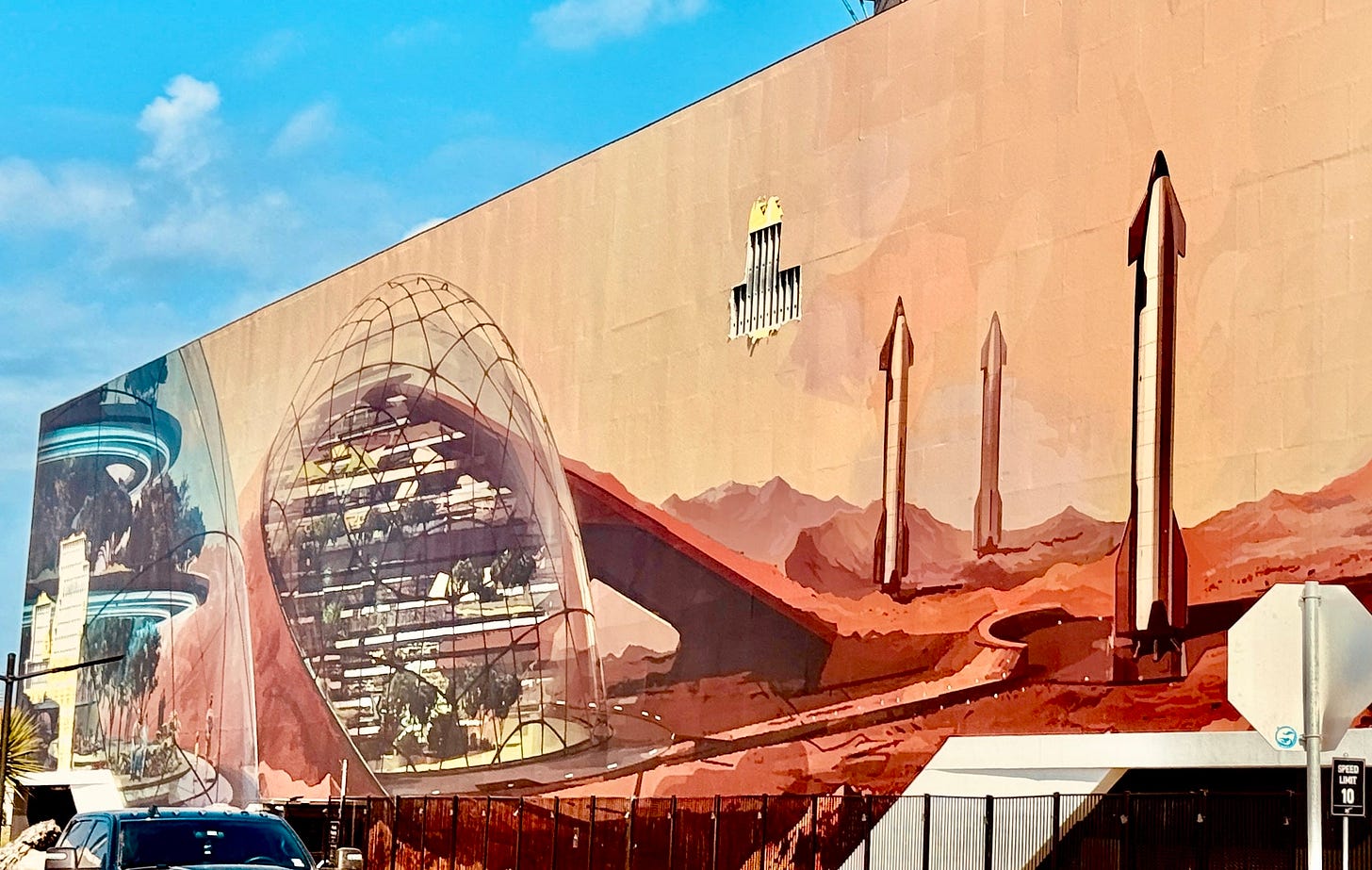
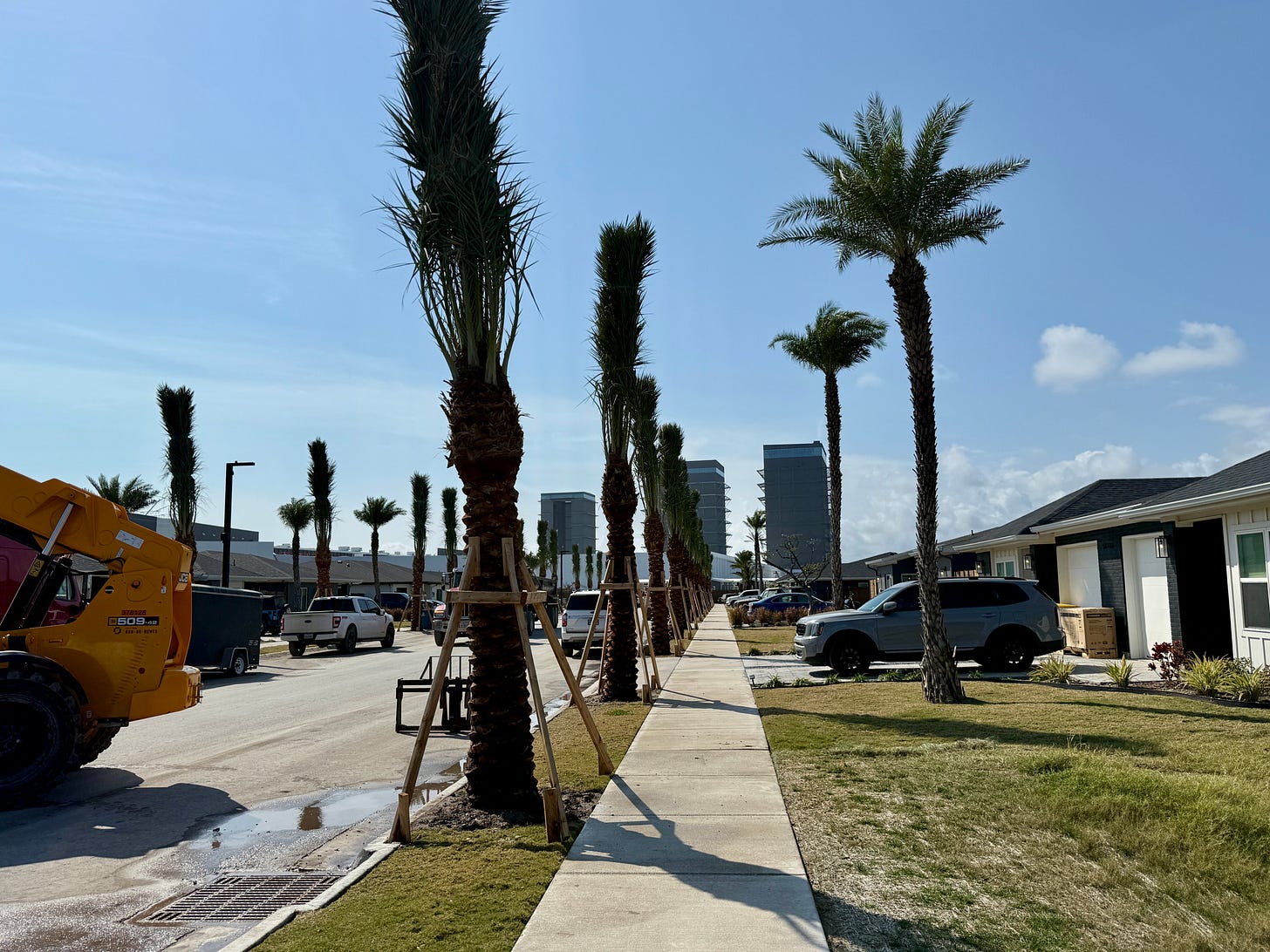
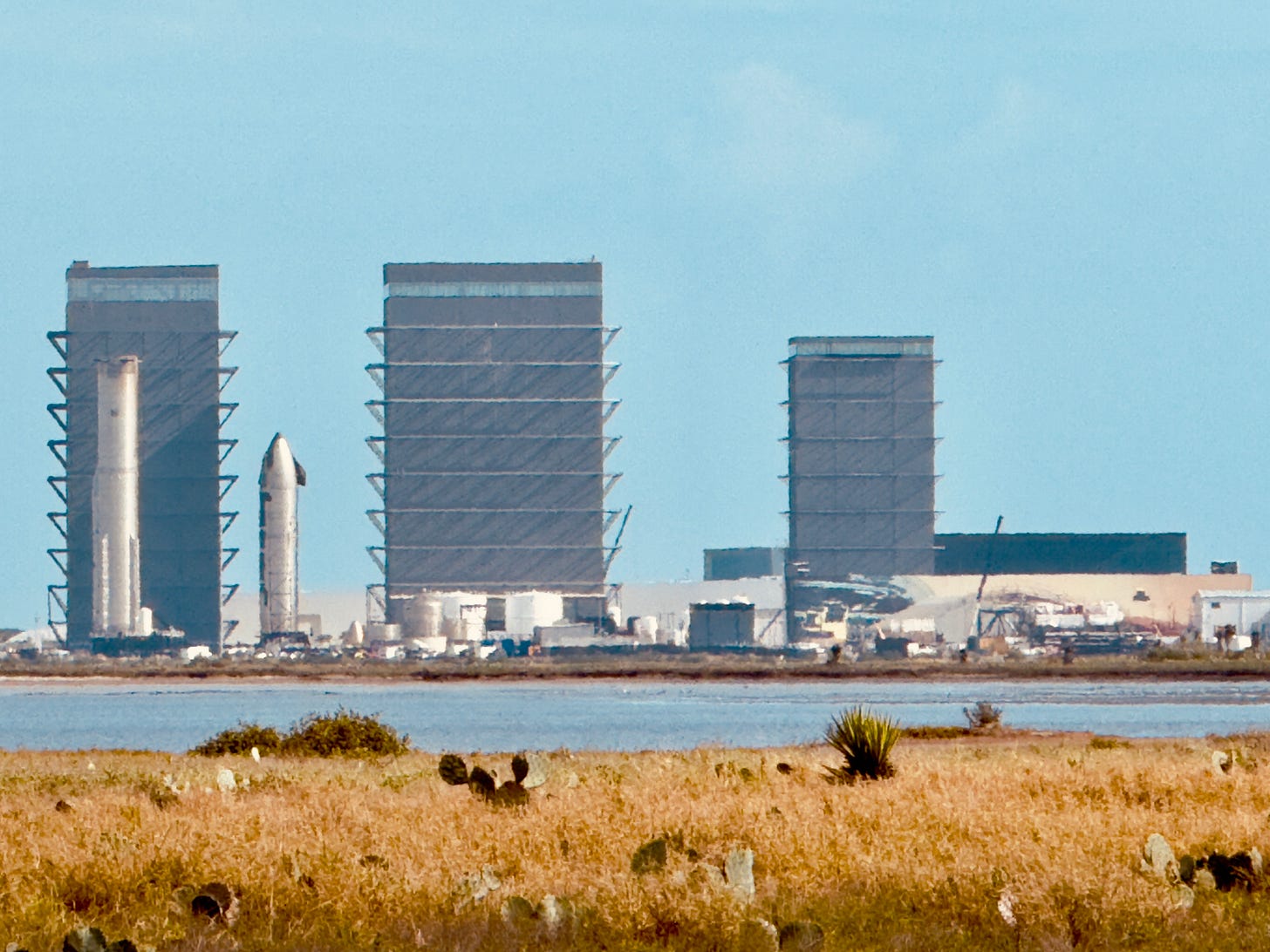
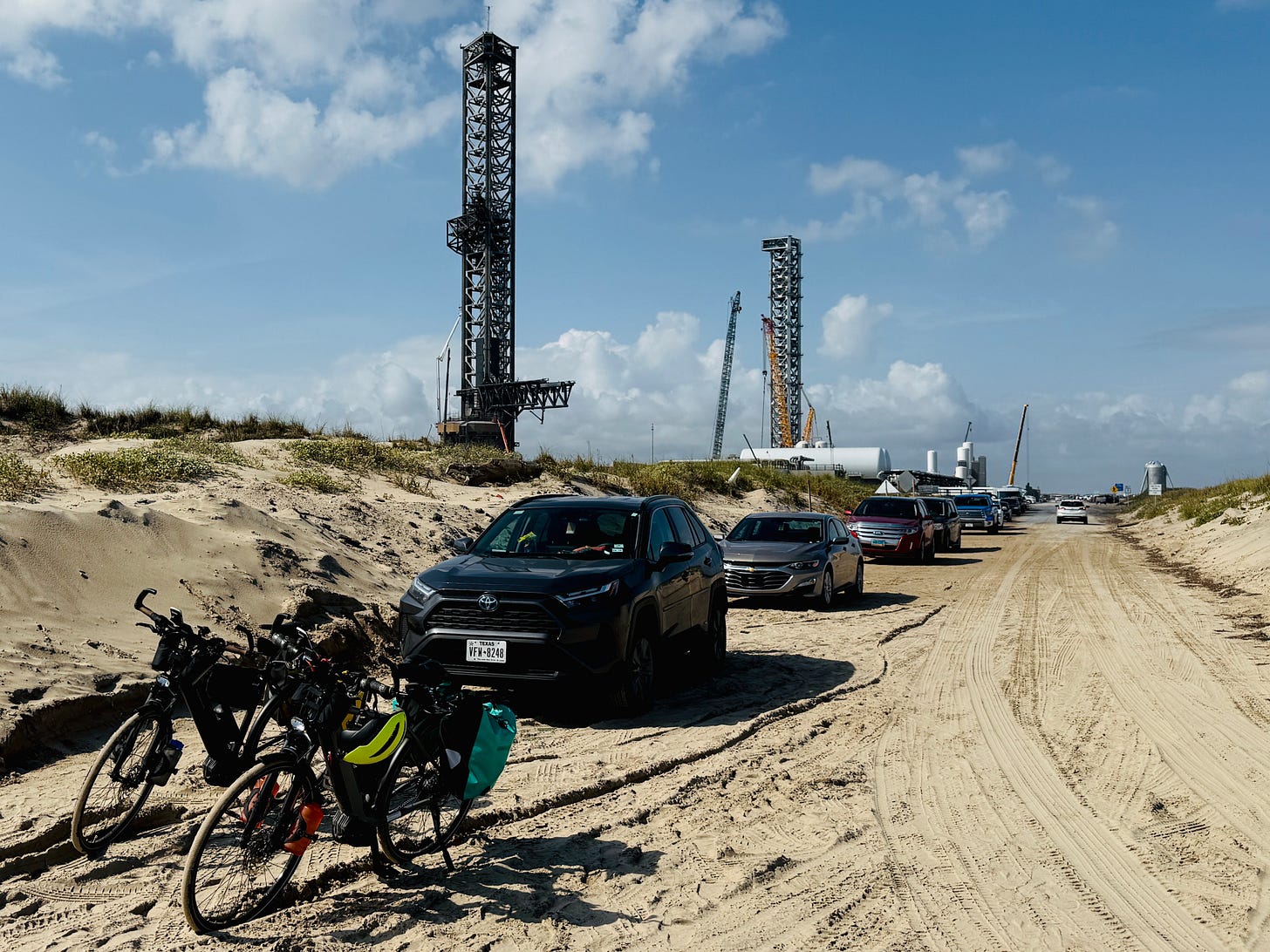
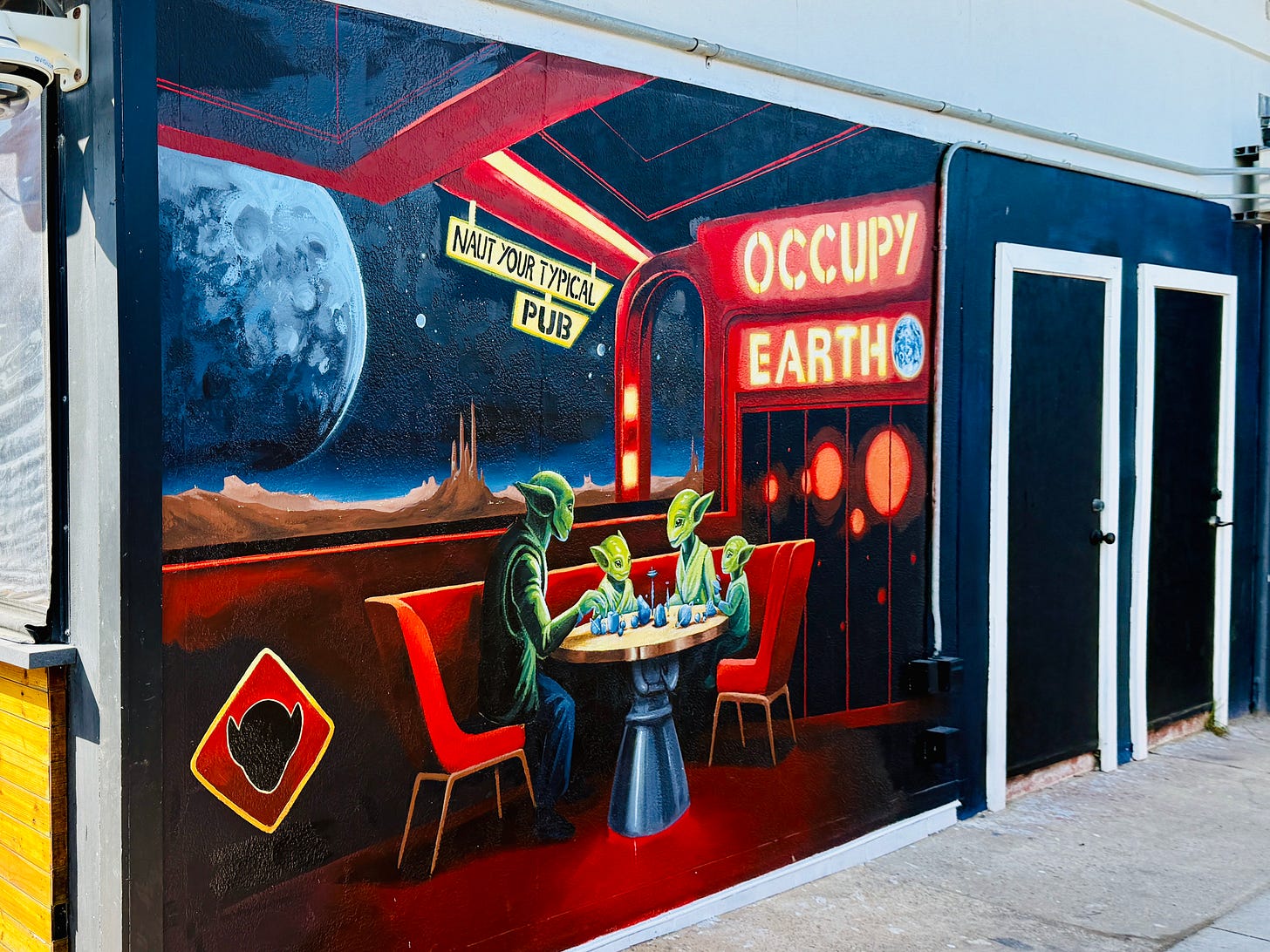
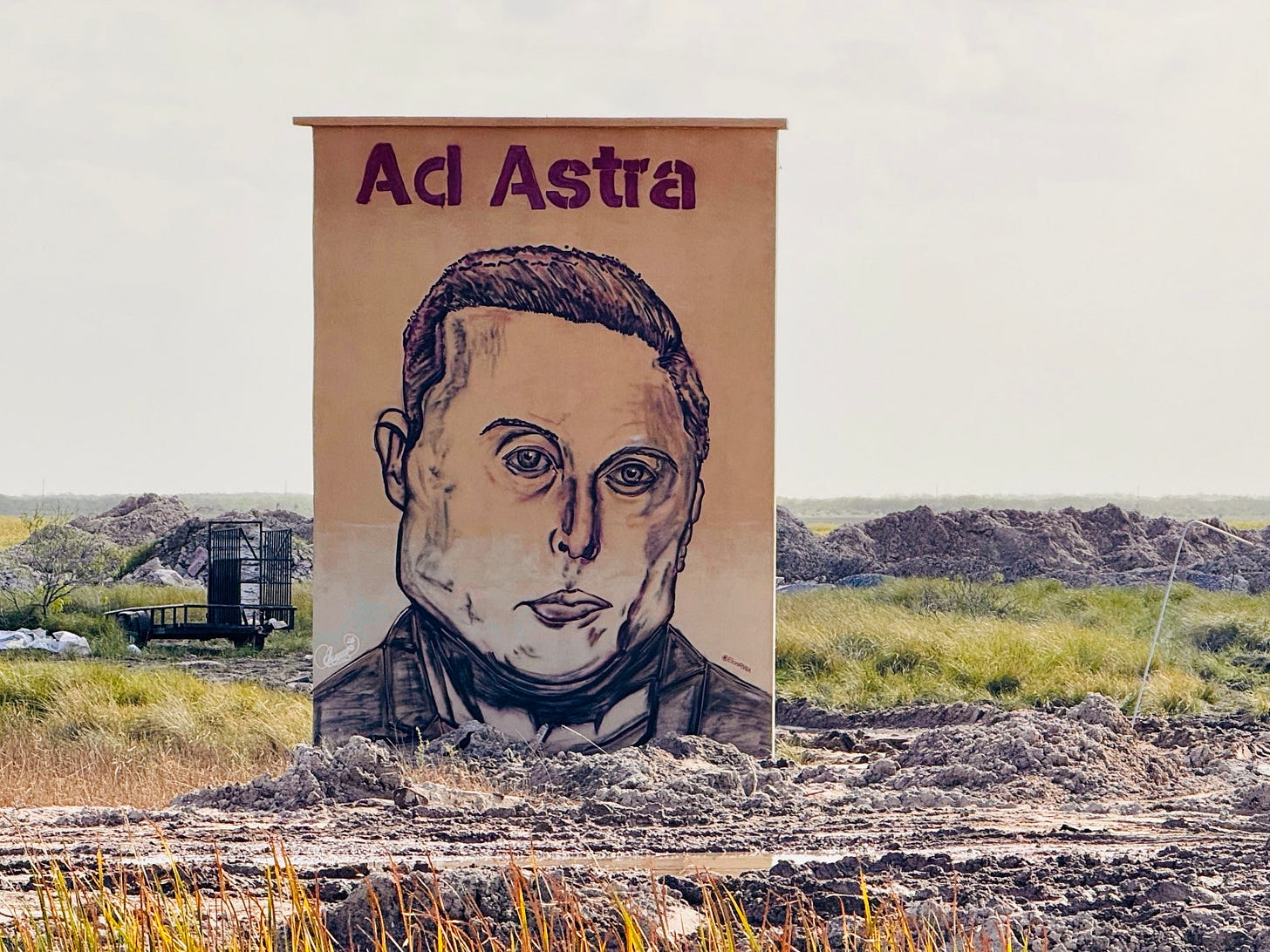

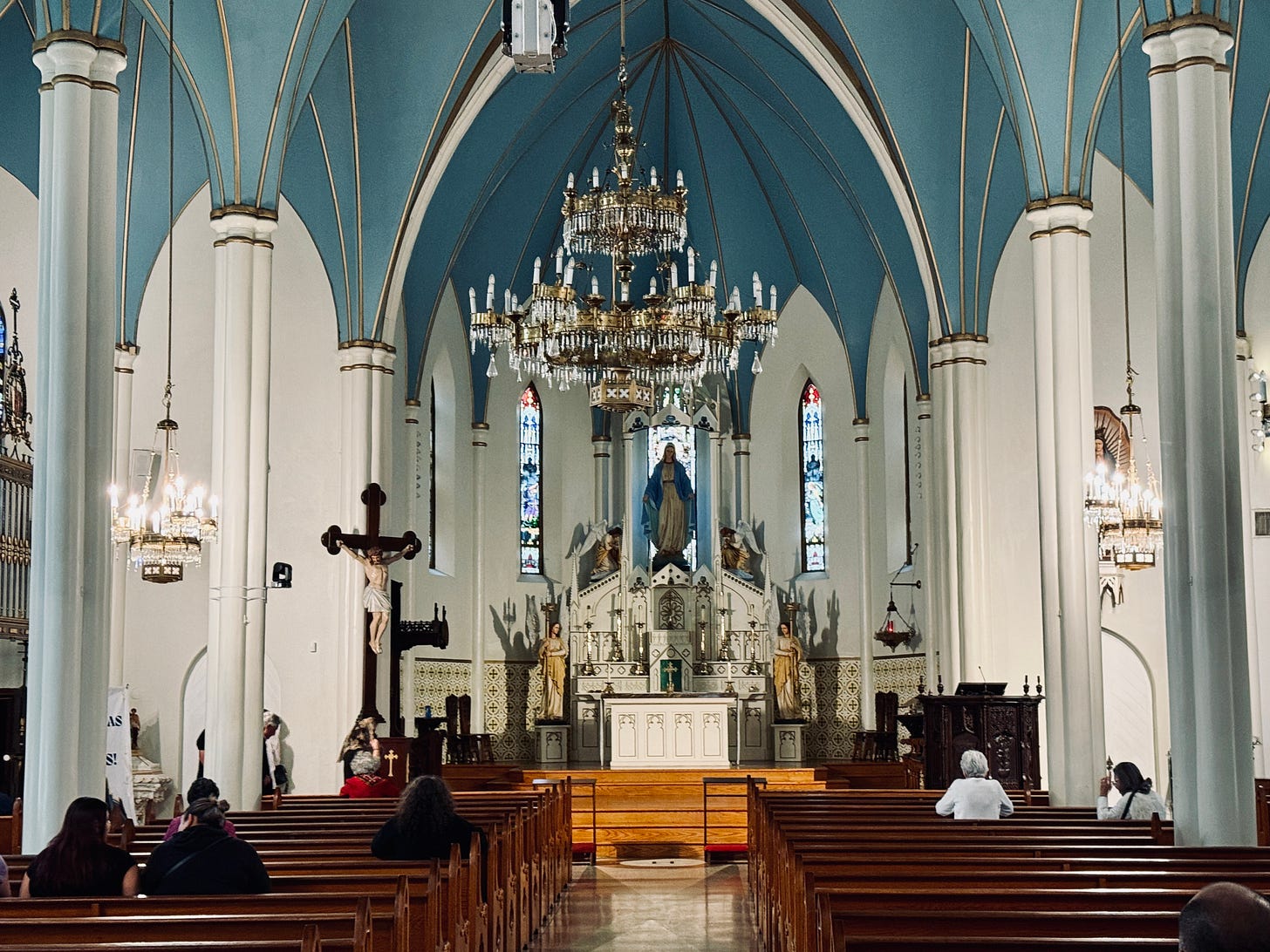
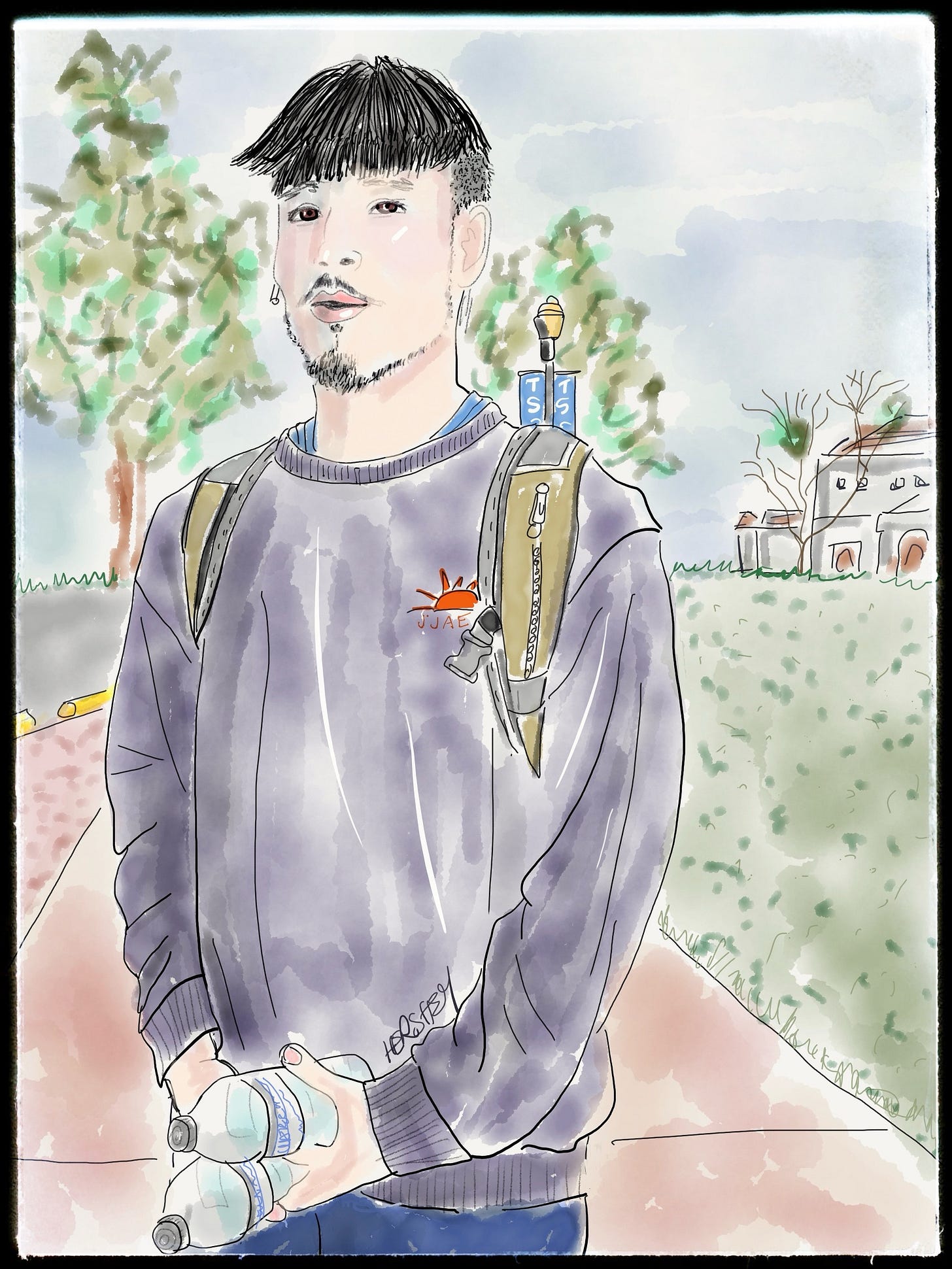
This article highlights an important contrast between the pursuit of technological advancement and the need for environmental sustainability. While projects like Starbase push the boundaries of what’s possible, it’s crucial to consider their long-term impact on the planet and local communities. The idea of biking south as a way to connect with the land is a powerful reminder that progress shouldn’t come at the cost of nature. How do we strike a balance between innovation and preserving the world we live in? Thought-provoking read!
You and Jenny are witnessing America at a pivotal crossroad. This post is a poignant historical document.